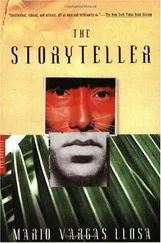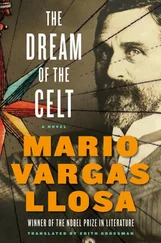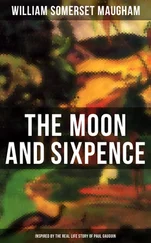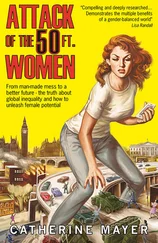Mario Llosa - The Real Life of Alejandro Mayta
Здесь есть возможность читать онлайн «Mario Llosa - The Real Life of Alejandro Mayta» весь текст электронной книги совершенно бесплатно (целиком полную версию без сокращений). В некоторых случаях можно слушать аудио, скачать через торрент в формате fb2 и присутствует краткое содержание. Год выпуска: 1998, Издательство: Farrar, Straus and Giroux, Жанр: Современная проза, на английском языке. Описание произведения, (предисловие) а так же отзывы посетителей доступны на портале библиотеки ЛибКат.
- Название:The Real Life of Alejandro Mayta
- Автор:
- Издательство:Farrar, Straus and Giroux
- Жанр:
- Год:1998
- ISBN:нет данных
- Рейтинг книги:4 / 5. Голосов: 1
-
Избранное:Добавить в избранное
- Отзывы:
-
Ваша оценка:
- 80
- 1
- 2
- 3
- 4
- 5
The Real Life of Alejandro Mayta: краткое содержание, описание и аннотация
Предлагаем к чтению аннотацию, описание, краткое содержание или предисловие (зависит от того, что написал сам автор книги «The Real Life of Alejandro Mayta»). Если вы не нашли необходимую информацию о книге — напишите в комментариях, мы постараемся отыскать её.
The Real Life of Alejandro Mayta — читать онлайн бесплатно полную книгу (весь текст) целиком
Ниже представлен текст книги, разбитый по страницам. Система сохранения места последней прочитанной страницы, позволяет с удобством читать онлайн бесплатно книгу «The Real Life of Alejandro Mayta», без необходимости каждый раз заново искать на чём Вы остановились. Поставьте закладку, и сможете в любой момент перейти на страницу, на которой закончили чтение.
Интервал:
Закладка:
Suddenly, instead of continuing toward Plaza San Martín, I decide to go into the Museum of the Inquisition. I haven’t been here for a long time, maybe since the last time I saw my schoolmate Mayta. As I go through the museum, I can’t get his face out of my mind, as if that image of a prematurely aged, tired man that I saw in the photo in his godmother’s house were evoked in some irresistible way by the place I’m visiting. What’s the connection? What secret thread links this all-powerful institution, which for three centuries kept guard over Catholic orthodoxy in Peru and the rest of South America, and the obscure revolutionary militant who twenty-five years ago, for a brief moment, flashed like a bolt of lightning.
What was the Palace of the Inquisition is in ruins, but the eighteenth-century mahogany ceiling panels are in good condition, as a lecturing schoolteacher explains to a group of kids. Beautiful ceiling: the Inquisitors were men of taste. Almost all the Sevilian tiles the Dominicans imported to dress up the place have disappeared. Even the brick floors were brought from Spain; now you can’t see them for the soot. I pause for a minute at the stone shield that proudly overlooked the archway of this palace, the shield with its cross, sword, and laurel. Now it sits on a broken-down sawhorse.
The Inquisitors set up here in 1584, after having spent their first fifteen years facing the Church of La Merced. They bought the property from don Sancho de Ribera, son of one of the founders of Lima, for a small sum, and from this spot they watched out for the spiritual purity of what is today Peru, Ecuador, Colombia, Venezuela, Panama, Bolivia, Argentina, Chile, and Paraguay. From this audience chamber, behind this massive table whose top is made of a single slab of wood, and which has sea monsters instead of feet, the Inquisitors in their white habits and with their army of lawyers, notaries, secretaries, jailers, and executioners struggled valiantly against witchcraft, Satanism, Judaism, blasphemy, polygamy, Protestantism, and perversions. All heterodoxies, all schisms, he thought. It was an arduous task, rigorous, legalistic, maniacal, that of the gentlemen Inquisitors, among whom there figured (their collaborators) the most illustrious intellectuals of the era: lawyers, professors, theological orators, versifiers, writers of prose. He thought: How many homosexuals could they have burned? A detailed investigation that filled innumerable pages of a file carefully stored away would precede each condemnation and auto-da-fé. He thought: How many mad people could they have tortured? How many simple people could they have hanged? Years would pass before the High Tribunal of the Holy Office would pass judgment from this table decorated with a skull, with silver inkstands with etched figures of swords, crosses, fish, and the inscription: “I, the light of the truth, guide your conscience and your hand. If you do not mete out justice, in your failure you work your own ruination.” He thought: How many real saints, how many daring people, how many poor devils could they have burned?
Because it wasn’t the light of the truth that guided the hand of the Inquisition: it was informers. They were the ones who filled these cells, dungeons, moist and deep caves in which no sunlight enters, and from which the prisoner would emerge crippled. He thought: You would have ended up here in any case, Mayta. For your way of life, of sex. The informer was protected to the utmost and his anonymity guaranteed, so he could collaborate without fear of reprisals. Here, still intact, is the Door of the Secret. Mayta, with a feeling of anguish, peered through the crack, linking himself with that accuser who, without being seen by the accused, would identify him by a simple nod of his head. The accused could be sent to prison for many years, his property confiscated, himself condemned to a degrading life or burned alive. He got goose bumps: how easy it was to get rid of a rival. All you had to do was enter this little room and, with your hand on the Bible, testify. Anatolio could come, spy though the crack, nod, pointing at him, and condemn him to the flames.
A doubtfully spelled notice informs us that they didn’t in fact burn very many: thirty-five in three centuries. It isn’t an overwhelming statistic. And of the thirty-five — a meager consolation — thirty were garroted before the fire devoured their cadavers. The first to have the lead in the grand spectacle of the Lima auto-da-fé was not garroted first: Mateo Salade, a Frenchman, was burned alive because he had carried out some chemical experiments that someone denounced as “dealings with Satan.” Salado? he thought. This poor frog must have contributed the Peruvian expression salado , a person with bad luck. He thought: From now on, you won’t be a salado revolutionary.
But even though the Holy Tribunal didn’t burn many people, it did torture an enormous number. After the informers, physical torture was the most frequently used device for sending victims, of both sexes, of all conditions and states, to the auto-da-fés. Here we see in all its glory a real circus of horrors, the instruments the Holy Office used — the verb is mathematically precise — to “extract the truth” from the suspect. Some cardboard dummies instruct the visitor about the pulleys and strappados — the rope from which the suspect was hung, hands tied behind his back and a hundred-pound weight strapped to his feet. Or how the victim was stretched out on the “pony,” an operating table that used four tourniquets to wrench out the limbs, one by one, or all four at once. The most banal of the devices was the stock, which immobilized the criminal’s head in a yoke as he was beaten. The most imaginative was the rack, of surrealistic refinement and fantasy — a kind of chair in which, using a system of hand and ankle cuffs, the executioner could torture the legs, arms, forearms, neck, and chest of the criminal. The most contemporary of the tortures is the hood — a cloth placed over the nose or in the mouth, through which water was poured, so that the victim could not breathe. The most spectacular was the brazier, placed next to the condemned person’s feet, which had previously been basted with oil so that they would roast evenly. Nowadays, Mayta thought, they use electric shocks on the testicles, sodium-pentothal injections, immersion in tubs of shit, cigarette burns. Not much progress in this field.
Ten times over, he thought: What are you doing here, Mayta? Is this a time for wasting a single minute? Don’t you have more important things to do? But he was moved even more deeply by the small wardrobe that for months, years, or in perpetuity, the people accused of Judaism, witchcraft, or of trafficking with the devil or of having blasphemed, and who had “vehemently repented,” abjured their sins, and promised to redeem themselves, had to wear. A room full of costumes: amid these horrors, this seems more human. Here is the “crown,” the conical hat, the hair shirt, white, embroidered with crosses, serpents, devils, and flames, in which the condemned marched to the Plaza Mayor — after a stop at the Callejón de la Cruz, where they were to kneel before a Dominican cross — where they would be whipped or sentenced. Garments they might also have to wear day and night, for as long as their sentence required. That’s the final image, the one that remains fixed in my memory, when, my visit over, I head for the exit, the idea of those condemned people who would go back to their normal business, wearing that uniform, which would inspire horror, panic, repulsion, nausea, scorn, and hatred wherever they went. He imagined what those days, months, and years must have been for the people who had to deck themselves out that way and be pointed out in the street, avoided like mad dogs. He thought: This museum is really worth a visit. Instructive, fascinating. Condensed in a few striking images and objects, there is an essential ingredient, always present in the history of this country, from the most remote times: violence. Violence of all kinds: moral, physical, fanatical, intransigent, ideological, corrupt, stupid — all of which have gone hand in hand with power here. And that other violence — dirty, petty, low, vengeful, vested, and selfish — which lives off the other kinds. It’s good to come here to this museum, to see how we have come to be what we are, why we are in the condition in which we find ourselves.
Читать дальшеИнтервал:
Закладка:
Похожие книги на «The Real Life of Alejandro Mayta»
Представляем Вашему вниманию похожие книги на «The Real Life of Alejandro Mayta» списком для выбора. Мы отобрали схожую по названию и смыслу литературу в надежде предоставить читателям больше вариантов отыскать новые, интересные, ещё непрочитанные произведения.
Обсуждение, отзывы о книге «The Real Life of Alejandro Mayta» и просто собственные мнения читателей. Оставьте ваши комментарии, напишите, что Вы думаете о произведении, его смысле или главных героях. Укажите что конкретно понравилось, а что нет, и почему Вы так считаете.












